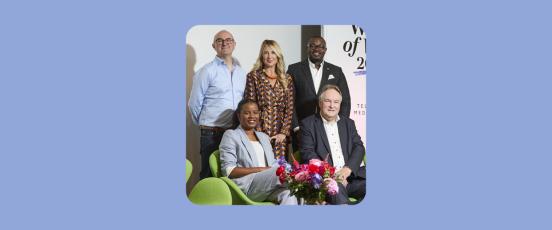Managing a multigenerational workforce

Managing five generations in the workplace at once can be tricky, especially when you’re spinning multiple plates to meet their different expectations. Let’s look at the benefits that multigenerational teams bring to a business, as well as some strategies for managing them.
Different generations in the workforce
In recent years, our workforces have become more age-diverse than ever. Across the EU, the expected duration of working life has increased by two years in the last decade. On the other end of the spectrum, most of Generation Z have now joined the world of work, meaning that there are now five generations at play, from those born in the 1940s to those born in the 2000s. Each generation has their own set of skills, values, and expectations of their employer.
Benefits of a multigenerational workforce
The biggest benefit of a multigenerational workforce is the potential for diverse perspectives; when you combine years of experience with fresh ideas, you’ll see more innovation and boosted performance across the board.
According to Lucy Bisset, Director of Robert Walters North West UK, “Diversity of experience drives innovative ideas. When managers are able to engage their entire workforce, endless opportunities for collaboration and innovation open up. Each generation will bring something different, and this blend of ideas and experience should really benefit business going forward.”
While young people do have a lot to learn from older generations, it’s also important that everyone in your organisation feels their voice is heard, no matter their age. Organisations that value contributions from every generation will foster open communication and improve employee experience, a key factor in retaining top talent.
Challenges of a multigenerational workforce
It can be hard for business leaders, HR teams and line managers to bridge the gap between the 17-year-olds and the 70-year-olds at work. When different generations have different values or ways of working, tension may arise. Communication, for example, can be a sticking point when it comes to connecting different generations in the workplace. Baby Boomers tend to value in-person meetings or phone calls, while Generation Z opt for technology-based communication via Teams or Slack.
There is also some variation of opinion across the generations when it comes to flexible working arrangements. Because they value in-person connection and a more structured working week, older generations often choose office-based jobs. On the other hand, younger generations value flexibility and work-life balance, meaning they will likely prefer to work from home. If office-based employees feel as though they’re carrying the burden of the workload, they may feel some resentment. This only furthers generational divides and reinforces negative stereotypes.
It’s important not to let stereotypes influence the way you work with an employee. For instance, just because someone’s young doesn’t necessarily mean they’ll prefer Teams over in-person meetings. It’s best to see the people in your team as individuals rather than representatives of their generation. This way, you’re not holding them to any expectation or comparing them against a generational stereotype. Generations are a guide, but never a hard and fast rule.
Managing a multigenerational workforce
Leading a multigenerational team takes empathetic leadership and an understanding of each generations’ values. Bisset says, “It’s key to understand from the top down what motivates and drives people, because incentives and career development opportunities will differ from different generations.”
Bisset also recommends a peer mentorship program, which benefits both younger and older workers, as well as driving organisational success. Junior employees will learn from their mentor but can also become a sounding board for new ideas that a senior might not have thought of. Her view is that “If we continue to embrace the lessons that each generation is able to offer – learning from those with experience as well as those with fresh ideas and perspectives – we will be well equipped to navigate the ever-evolving future of work.”
Using technology to engage a multigenerational workforce
We know that successful organisations cater to the needs of every generation in their workforce and encourage collaboration between them. The difficulty for business leaders is actually connecting every generation. This is where technology can be the answer, especially for organisations wanting to attract and engage future generations of talent.
Our unified platform People First enables different generations across the workforce to connect, engage and collaborate. Its social media-inspired design means that it’s easy to use and appeals to generations like Millennials, who are now entering top leadership and C-suite positions, and Generation Z, who use modern platforms like this instinctively.
Generation Alpha have not yet entered the workforce, but any organisation wanting to prepare for the future of work needs to address the fact that this generation of employees will see cloud-based, mobile-first platforms like People First as a need, not a want. As the first true digital natives, they’ll expect real-time features and learning content at their fingertips.
This is a shortened version of an article produced by and published on Telegraph.co.uk – read the full article here.
To learn more about how to engage every employee, no matter their age, register for our monthly World of Work 2050 webinar series. Each episode explores an emerging workplace trend with a panel of experts and special guests, giving you the insights you need to stay ahead of the curve.
Sign up now and you'll get on-demand access to our webinar with positive psychology coach Zena Hall as she gives her top tips on managing a multigenerational workforce and prioritising employee wellbeing.



